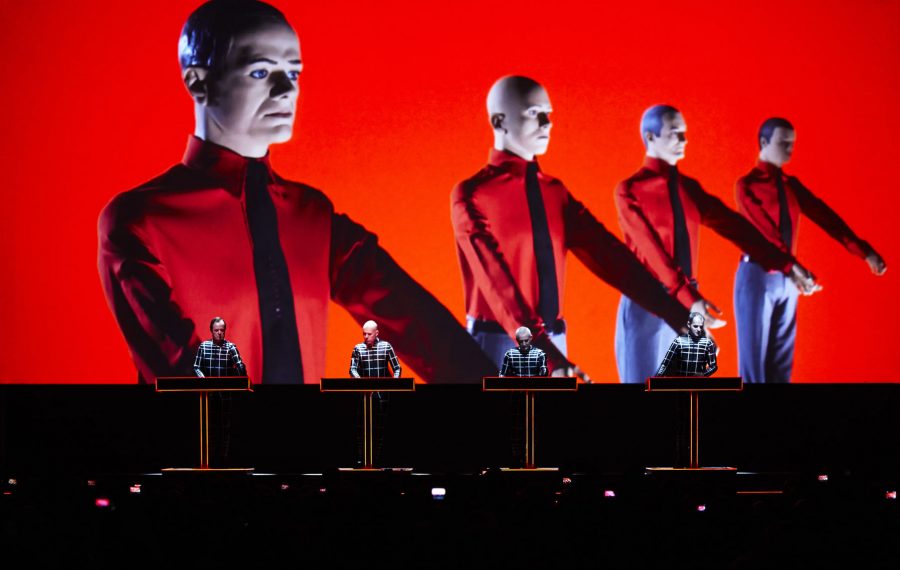Kraftwerk incorporates visuals, music and message in 3-D show
September 12, 2016
At 8:40 p.m. last Friday, the curtains of the Orpheum Theater’s stage opened to four older men wearing tight black suits with white lines stretching across their bodies. Everyone put on the 3-D glasses given at the door, anticipating the audio-visual innovation Kraftwerk has pioneered since the group’s initial inception in 1969.
The crowd was an interesting assortment, spanning generations, a result of the band’s long and influential career. What started as the Dusseldorf duo Ralf Hütter and Florian Schneider became a 47-year icon with 20 past and present members, 10 albums and a Grammy Lifetime Achievement Award.
The opening song, “Numbers,” came on and the white lines of the suits turned green. The bass amped up and numbers began flying at the screen from behind the crowd, onto what looked like an 80’s computer screen. “Computerworld” then took over the screen in large letters referencing the message of the show: we are obsessed with technology.
The social commentary continued with “The Man-Machine,” which featured large heavy red blocks being stamped on the screen to spell out “man,” with the word “machine” stamped afterwards. The song suggested that technology is a part of us.
At other points in the show, the audio-visual showcase lightened up the room and hyped up the crowd. “Computer Love” had the decibel levels of the audio displayed across the screen, with the occasional string of words floating across the tops of the crowd. For “Spacelab,” a UFO travelled around the earth and landed right outside of the Orpheum. One song later, “Neon Lights” brought a visual thrill, with neon signs moving back and forth across the screen in motion with the music. “Metropolis” sent the crowd soaring through a city skyline while “Autobahn” cruised the crowd along the famous highway.
The mood took a dark turn, however, with “Geiger Counter,” easing us into a nuclear world. “Radioactivity” presented huge blocks of texts slamming in front that said “HIROSHIMA,” while the bass reached peak levels. There was no direct outcry, but it was evident that these songs are critical of modern war tactics.
“Tour De France” and “Trans Europa Express” marked a significant slowdown in the show. The band left, replaced by four unnerving mannequins, as “The Robots” came on. However, the energy and the band returned with “Planet of Visions,” proclaiming Germany and Detroit loud and proud as “so electric.”
Kraftwerk finished off the set with “Techno Pop” and “Music Non Stop.” Facial planes faded on and off the screen, as the crowd entered a collective rhythm. One by one, members of the band stepped back from their podiums, walked to the end, and took a bow. The show ended as Ralf Hütter, the only original band member left in the group, exited the stage. When the lights turned on, a wide-eyed audience and the excited post-performance murmurs among those leaving the theater said it all.
Correction: A previous version of this story misspelled Orpheum Theater as Orpheum Theatre.























Leave a Comment